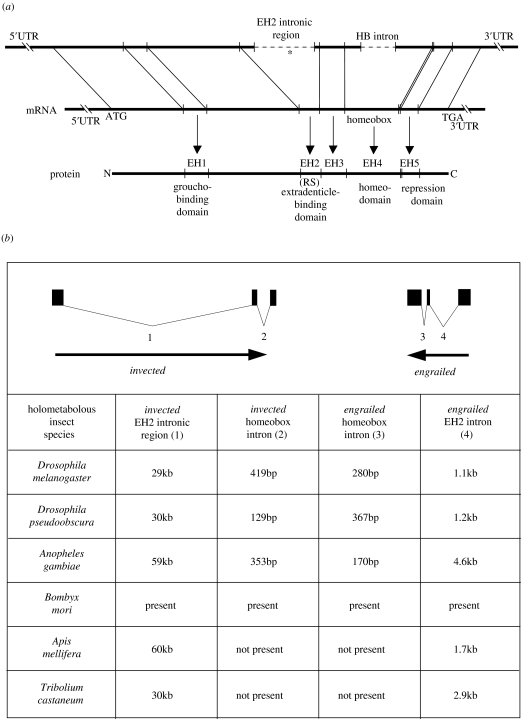Figure 1.
(a) Diagram showing the relative positions of the engrailed-family homology regions (EH1–EH5). A conserved intron (dashed line) is located within sequence encoding EH2. In a subset of hexapod engrailed-family genes a hexanucleotide microexon (asterisk) is present in this intronic region that introduces an arginine–serine dipeptide (RS) to EH2. A homeobox intron (dashed line) is found only in the engrailed and invected genes of dipteran and lepidopteran species. (b) The genomic arrangement of holometabolous insect engrailed and invected paralogues is conserved. They are linked and orientated tail-to-tail. The relative lengths of homologous introns are also conserved across holometabolous insect species. The EH2 intronic region (1) of invected genes is in the order of tens of kilobases long, and an order of magnitude longer than the EH2 intron (4) of engrailed genes. The homeobox introns (2 and 3) of dipteran and lepidopteran species are only a few hundred bases long. Data for Bombyx mori come from Wu et al. (1999) in which precise sequence lengths were not reported. Some engrailed-family genes contain additional introns not shown in (a) or (b).

